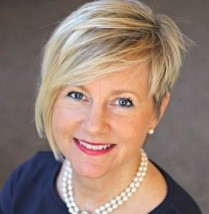 For Dr. Laura Santana, an important aspect of effective leadership is cultivating a mind-body connection to bring a whole person to the demands of leadership.
For Dr. Laura Santana, an important aspect of effective leadership is cultivating a mind-body connection to bring a whole person to the demands of leadership.
Santana, whose more than 30-year leadership career has a global reach — including her current role as a senior leadership solutions partner at the Center for Creative Leadership (CCL)—first discovered this characteristic while teaching fitness, yoga, and meditation for 25 years in gyms and wellness studios across France, Mexico, and the United States.
“If leaders want to do noble work in their organizations and in the world, knowing how to find peace and calm is a critical skill,” says Santana, whose achievements in the wellness space include implementing the first client education program at Mexico’s inaugural Gold’s Gym franchise and founding a non-profit ashram and meditation center in Mexico. “The mind-body integration and the practice of mindfulness allows us access to higher-order thinking and thoughtful decision-making.”
Santana was the Director at the Golds Gym, managing the instructors of the Aerobics program, and doing client education teaching fitness in Mexico City when she was asked to build a wellness program to integrate within a six-day leadership development program at CCL’s Mexico City affiliate. That launched her 14-year career working in Spanish with Latin American leaders and led to the next 16 years in global outreach working from CCL’s world headquarters in Greensboro, North Carolina. She now travels the world, sharing what she’s known all along about how executives and leaders across sectors and geographies can more consistently bring their best selves to the work of leadership: cultivating an ability to respond from calm, instead of reacting from stress, allows their best selves to step forward. Neuroscience affirms what time-honored traditions have heralded for millennia.
In 1988, when Santana introduced the mind-body connection in her leadership development world, it was a radical idea. Once seen as ‘alternative’ or ungrounded, neuroscience now shows us images of brain structures and synapses changing as we integrate disciplines of meditation or mindfulness into our lives. No longer limited to those studying meditation for decades, leaders are finding benefits from dedicating even 10 minutes of mindfulness practice a day.
“I wanted them to have first-hand experience of mind-body integration as a micro skill set that would enhance their ability to do work in the world from a place of self-awareness, patience, and intentionality,” says Santana of how she introduced these disciplines and paradigms to students.
She soon realized that she had found her passion to work with people who wanted to use their positions of power to enact positive change — by helping them to remove outer and inner obstacles to leadership effectiveness.
She looked to Antioch’s Leadership and Change program for more tools to address the universal challenges of leadership on a global scale, after already earning a bachelor’s degree in psychology and a master’s in management and organizational development. After more than a 20-year investment in her career, the curriculum at Antioch captured her interest, because she was looking for a program that “could include and transcend academia and prove relevant to her work in the world.” She wanted to “fill in the gap between what she knew and how she wanted her work to serve her clients’ development.”
The doctoral program, which she graduated from in 2009, allowed her to utilize the in-depth initiatives that she was working on around the world for thoughtful focus in her coursework. She says that the experience of having Antioch faculty’s support for critical thinking on her real-world projects helped her to further develop a point of view and a voice in the leadership domain.
She says one of the most important takeaways was from Professor Peter Vaill — to remember the power of asking good questions, rather than stopping at first answers, to facilitate deep learning. That teaching applies to leadership on a global scale. By helping people to open their mindsets and think beyond what they have learned from cultural norms, practices, or expectations, we can invite them to a broader perspective, and an expanded view of the possibilities, Santana says. She adds that sometimes it helps them to overcome their internal or external obstacles.
“That’s how we set the stage for adult development,” says Santana. “We stretch people’s sense-making mechanism by considering alternative perspectives, or diverse points of view. We help them move beyond the constraints that have trained them into one way of thinking.”
That’s what Santana calls vertical development: Making sense of the world in a new way or a different way, and expanding an ability and willingness to navigate ambiguity, complexity, and chaos. That is a mark of strong leadership development, or any type of human development, she says — developing ourselves and providing space for others to develop is one way we make the world a better place.
She adds that the process may not always be comfortable, however, mindfulness offers awareness of a choice point in how we navigate the discomfort and maintain calm even among uncertainty.
Santana reminds herself and her clients of a quote by author Clair Morris: “When we walk to the edge of all the light we have and take the step into the darkness of the unknown, we must believe one of two things will happen — there will be something solid for us to stand on, or we will be taught to fly.” She adds that development increases our ability to trust that we can handle any outcome with deep presence, calm focus, and clear intentions — and that’s how we make ourselves, our work, our teams, and the world a better place.
